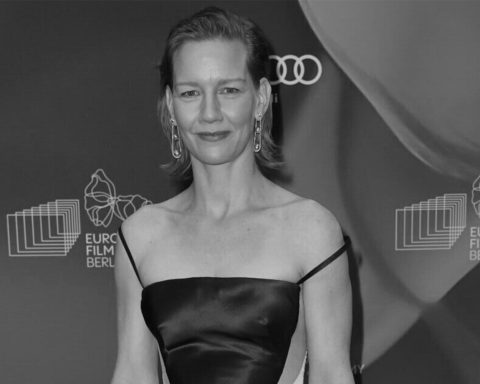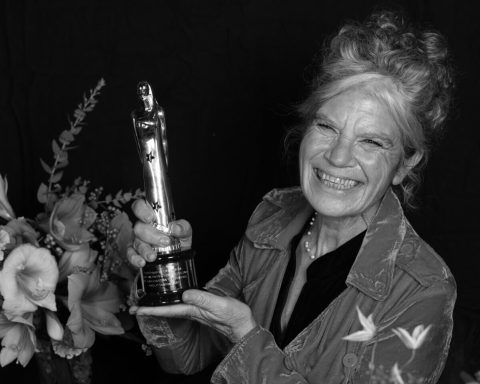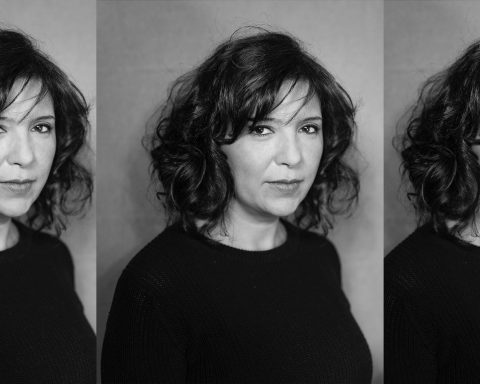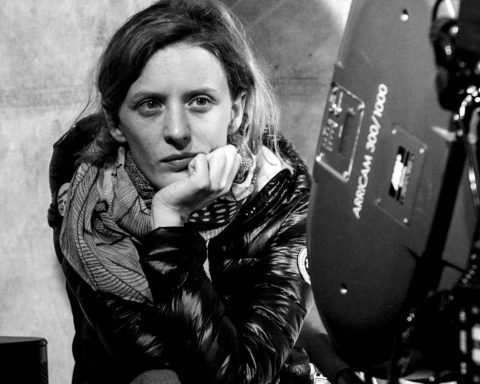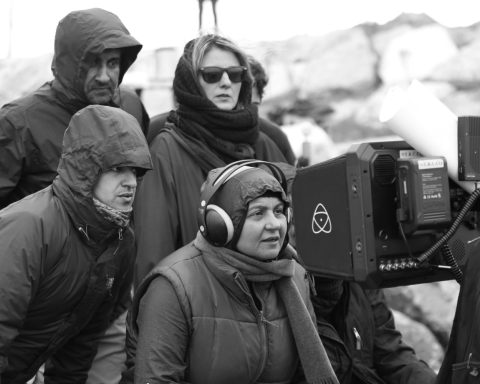Selma Vilhunen is a fiction and documentary director and screenwriter. Her latest works as a director include the documentary “Hobbyhorse Revolution,” which premiered at the Tampere Film Festival and won the main prize in National Competition as well as the Risto Jarva main prize, and has since traveled to many festivals and won awards worldwide. Her fiction feature debut “Little Wing” premiered at the 2016 Toronto International Film Festival and won the Golden Camera Taodue Award at the 2016 Rome Film Fest. The film has also received the Nordic Council Film Prize in 2017. Her short film “Do I Have to Take Care of Everything?” received an Oscar nomination in 2014.
Tara Karajica caught up with her at this year’s Stockfish Film Festival, where she was one of panelists of the 2nd “Nordic Female Filmmakers Meeting Point.”
How did you get into filmmaking? What was that defining moment?
Selma Vilhunen: I’m not really sure what the defining moment was exactly. Maybe it was when they set up a video club at my high school. The high school lasted three years and I was in my second year and I think I was seventeen or eighteen and by that time, I already had the feels for the moving image, so it was a no brainer for me to join the video club. My best friend did too and we started making films there. So from that point on, there was no turning back. I was able to practice my dreams, in a way. But, somehow, I feel like I have always wanted to make films – I just didn’t always know it exactly. I feel like I have always been planning films or have been looking at the world through the eyes of a filmmaker. I have always enjoyed just looking at things, just staring at the world forever and observing people and lights moving and shifting in space and time. That is, in a way, filmmaking just without the camera. So, from then on, I just started to pursue the dream of becoming a professional filmmaker.
And that dream kind of culminated with an Oscar nomination in 2014 for Best Short Film?
S.V.: Well, that was a very happy moment, obviously, but to be nominated for an Oscar was never really my dream and it still isn’t.
Really?
S.V.: Yes, for some reason… But I do have these vain glamour dreams. I do want to be in Competition in Cannes. That’s like my Oscars. So if that happened, then I would be like: “OK! My job here is done!” But the Oscar thing was obviously great and it’s something I really cherish as an experience. It’s, of course, wonderful to be able to attach these attributes to my name sometimes, but for some reason, it wasn’t that kind of dream and those moments when I felt like: “I’ve accomplished my dream.” Those happened before the nomination because just to be able to make a film, which had already happened several times before 2014, has already felt like: “I’m there, I’ve made a film, it talks to the audience and there’s a meaning to the work.” I felt like I had already made my dream come true and it was a great bonus to be nominated.
You made many films in a very short period of time in the last three years. Many would call this a feat given how hard it is and how long it takes to make a film today. Can you comment on that?
S.V.: In a way, it’s almost a bit of a coincidence that they were completed and released within such a short period of time. But when you look at the time that I actually spent making those films, it spreads across a longer period of time. For example, I started writing Little Wing back in 2006 and while I didn’t write it all the time during those ten years, I would come back to it and write it. But also, the truth is, I did work on them simultaneously, so I was preparing or working on Little Wing and, at the same time, I was filming Hobbyhorse Revolution, which is a follow up documentary film and which also spread over a time span of many years. So sometimes, I had to take a break from filming that film, but if there was something important that I had to film, then I would just make space for it. And then, at the same time, we were developing Stupid Young Heart together with the screenwriter and producer, so I was sort of juggling between these three projects. Of course, if there was an intense period of working for some film, then I would be just working on that particular film like the shooting period, for example. It was quite intense, but somehow those three films also benefitted each other. I feel like I got so much from working with the girls on Hobbyhorse Revolution that I could use in both Little Wing and Stupid Young Heart. I felt so at home with the teenagers and very confident about building the world of teenagers and I don’t think I would have had that without the documentary between the two features.
In that sense, how do you feel these three films connect your personal directing style and your signature as a filmmaker?
S.V.: Some critics have even said that it’s almost like a trilogy, which is an interesting point of view, like it’s the teenage trilogy or coming of age trilogy or something like that. But I am not sure about this whole signature thing. I would say it feels a bit funny to say such a thing about yourself, but on the surface, these films are quite different. What I think is the same is the way I look at a person or at people. I really work a lot on getting my characters, be they fictitious or real-life people, to be portrayed as round and diverse as possible and I hope to find the fire and strength in the shy one and the sensitivity in the strong one and so on. I really work on that. So, maybe, that is something that can be seen in all of these films.
How would you describe your filmmaking style in visual terms?
S.V.: In some way, I would like to think that I am always learning the medium more and more. I don’t think that the films resemble one another so much. I like to think that each film creates its own visual vocabulary. On the other hand, though, I think I do have things that are similar from one film to the next and it has to do with the way I look at people. I tend to be quite on the eye level, sort of a human filming another human from the same level and that’s a visual choice. My films tend to be “simple” visually, so I just come there as a fellow human being with my camera. Another thing is that my camera is often sort of like the direction of inspiration and information that flows from the world and from the person towards my camera, so I am sitting there and just capturing things as they come. My camera is an inspired camera. I get inspired by people and choices and I am building a vision in front of the camera very elaborately. I let the world or people come into my camera. Of course, there are all the decisions that a filmmaker makes, but roughly put, that’s the direction that I work in. Maybe also something that connects these three films or adds to what I have just said about being inspired by the world as it is, is me not really seeing a huge difference between documentary filmmaking and fiction filmmaking. To me, they are more or less the same thing; it’s just a slightly different approach. In Stupid Young Heart, I went for the documentary style of working, maybe a little bit more compared to Little Wing. In Stupid Young Heart, the material in the screenplay offered or created a space where I could really use the real world as it is and really be inspired by what’s really happening in the neighborhoods where those stories take place. Then, it was the other way around in Hobbyhorse Revolution, which is a documentary film; in that world, when you’re making a documentary, that’s when the filmmaker’s choices become visible, so it’s really my vision on the phenomenon that I’m portraying, my way to look at the people that I am portraying and my choices because I am kind of curating the people that I am portraying in the film, I’m choosing what to show and what not to show and I am creating a narrative arc. So it’s this combination of letting the world just take over my camera as it is and, on the other hand, curating and editing those bits and pieces that come into my camera. That is the way I make films.
There are many different approaches to address this problem and, somehow, what works for me best or what I find most effective is to work for more and more female stories to just come out there in the world.
There has been a lot of discussion about women in film today. How do you perceive the situation? How is it in Finland?
S.V.: Since the world we live in is not equal, everything affects everything, so we still live in a world where it’s often difficult to get people to acknowledge that your point of view, your perceptions and your stories are as important as those of your male colleagues. In lots of ways, this sort of thinking is hiding inside people and it’s not only men who don’t think women’s stories are important, it’s also other women and it’s so much in the way we are built that it’s sometimes hard to just acknowledge it yourself. This is, I think, what we are tackling the most and this is sometimes a very hard discussion because sometimes my female colleague and myself can just have a plan that sucks, we can also just have dull thoughts and bad screenplays and that’s also a possibility. So how do we distinguish the line between bad and lazy thinking and then some kind of glass ceiling or structural problem where my ideas aren’t considered as good because they are about women or they are about women’s worlds or by a woman? Sometimes, that’s also a bit difficult because I don’t want to avoid criticism because I am a woman; I am also capable of making a bad film. I just think that this is such a huge issue. It’s in every layer of society and all of the different details of this issue affect films. There are many different approaches to address this problem and, somehow, what works for me best or what I find most effective is to work for more and more female stories to just come out there in the world. Film is such a funny medium because it has such a huge effect on the world – not only do we reflect the world, but we also create the world on the silver screen; we build ways to see the world and we have the power to create new concepts, so in that way it’s just very important to increase the number of titles that are out there and the number of different points of view and different voices because little by little when we get these new concepts out there, we will be able to see the world in a different and more diverse way.
What was the best advice you were given? What advice would you give?
S.V.: It was a good one. I got it from a man when I was just accepted into film school. I think I was twenty-one and he told me: “OK, I think that now when you start making films in that film school, just start making them for real. Don’t do any sort of in-between stuff, just start making them for real now. Any film is a real film and you should have that attitude in your work. It’s for real now” and I thought that was kind of a good advice. At the same time, it’s important to be able to experiment and fail, especially in film school – that’s what it’s for. At the same time, I think it’s quite a good advice to think that life is too short and any film is anyway a very big effort or it’s a lot of work, so you might just as well take it seriously and take yourself seriously from the very beginning. So I kind of did that. I guess what I’m saying is that even if you’re young, just take yourself seriously. What you’re making is real and if you’re making a piece to be reflected on a canvas and something that can be copied and reflected to masses, it’s not a little thing, it’s a big thing, so take it seriously. If someone came to me, I would say that: “Always be open to criticism, but be quite selective. Only listen to that criticism that really helps develop your own thing.”
Is there any female filmmaker you look up to? What is your favorite film by a female filmmaker?
S.V.: I would say probably Andrea Arnold. She’s really my hero. I really love Fish Tank and American Honey. I’m happy to have finally seen it on the big screen with a good sound, not a long time ago. It was last autumn that I saw American Honey in a film theater in Helsinki and it was a really, really empowering experience. I have seen it on a laptop before and the difference between that cinema experience and the laptop experience was like two different films. It really came alive on that silver screen and that was such powerful poetry. It’s an experience I go back to. She’s my hero. There are other films as well. I really like Gabriela Pichler. Eat Sleep Die is great and also Amateurs. I’m a big fan. And my mentor, Pirjo Honkasalo.
What are your next projects?
S.V.: I have a couple of projects that are sort of cooking. I’m working together with my partner at Tuffi Films, Jenni Toivoniemi who is writing a story about a Thai woman who comes to live in Finland as the wife of a Finnish man. We are developing it quite slowly but surely, so I am not sure when that will be in production. It’s a good film, so it will be out there one day. Now, I really want to write for myself, so I have just started writing something for myself – I have kind of let go of the teenagers for a while. I’m now writing about middle-aged people and their love troubles.
This interview was conducted at the 2019 Stockfish Film Festival.





